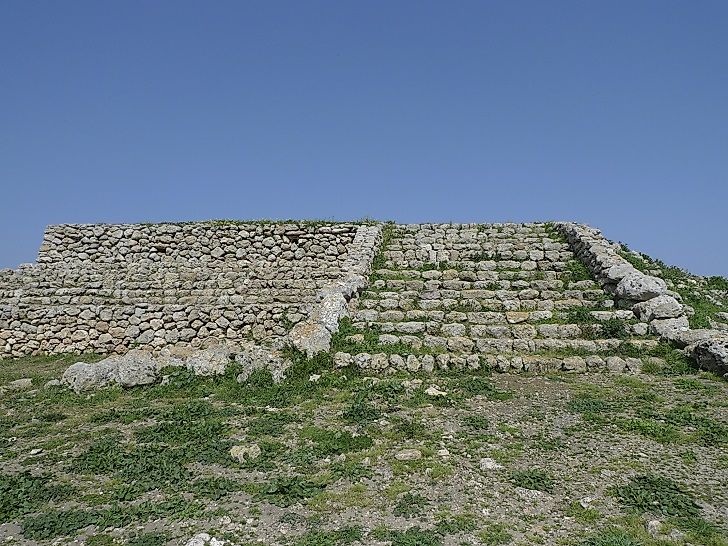Oldest Places Of Worship Still Standing

Today, tourists have replaced worshipers of several of the most ancient places of worship to have survived the weather, wars, and pestilence since times long ago. Most of these temples and churches may be found in the Mediterranean, Mesopotamian, and Indian regions of the world, regions which are considered the cradles of humanity and civilization. Many of these structures were built by great leaders of their time and regions.
10. St. Thomas Syro-Malabar Palayur, India (52 CE)
The St. Thomas Syro-Malabar Palayur is a Catholic Christian Church that was built circa 52 CE. It is located in Kerala, India. It is believed that Saint Thomas built it to begin the conversion of the people in the area to Christianity. Saint Thomas was one of Jesus' contemporary apostles.
9. Temple of Hera, Italy (c. 550 BCE)
The Temple of Hera is an ancient Doric temple built circa 550 BCE. It is located in Italy, in the ancient city of Paestum. It has a divided interior, which many believed was purposely done, as it was built for the worship of both Juno and Zeus. Animal sacrifices were offered here and ceremonially eaten afterwards.
8. Dhamek Stupa, India (249 BCE)
The Dhamek Stupa was built circa 249 BCE. It is located in Sarnath, Uttar Pradesh, India. It is not well understood by scholars today, though in its day it was probably used as a pre-Buddhist tumuli. The great Mauryan King Ashoka originally built a stupa here before it, which was later replaced by this stupa. The site of the original stupa there is believed to be where the Buddha gave his first sermon.
7. Sanchi Stupa, India (300 BCE)
The Sanchi Stupa was built circa 300 BCE. It is located in Sanchi, Madhya Pradesh, India. This stupa was considered as one of the most important temples for Buddhist pilgrimages from the third century onwards. It is one of the best preserved Buddhist stupas in all of India. The building is credited to the Mauryan King Ashoka.
6. Parthenon, Greece (447 BCE)
The Parthenon was built circa 447 BCE, and is found located in the Acropolis, Athens, Greece. This temple was built in honor of the patron goddess of Athens, the deity Athena. It was built by the sculptor Pheidias, and was commissioned by the general and politician Pericles to honor Athena, and to celebrate her role in the Athenian victory over the Persian invasion. The temple has survived lootings, the ravages of time, erosion, and pollution.
5. Chogha Zanbil, Iran (c. 1,250 BCE)
The Chogha Zanbil is a ziggurat temple, and was built circa 1,250 BCE. It is located near Khuzestan, Iran. Elamite King Untash-Napirisha had this ziggurat built to honor the god Inshushinak. The structure has three main walls, which served to protect the different areas of the complex. The complex as a whole housed a town, temples, royal palaces, and royal tombs alike.
4. Dur-Kurigalzu, Iraq (c. 1,350 BCE)
The Dur-Kurigalzu is a ziggurat temple that was built circa 1,350 BCE. It is located in southern Mesopotamia, about 30 kilometers from the city center of Baghdad. The Babylonian King Kurigalzu I had it built, though it was later abandoned. It stands at about 170 feet in height, and is one of the most well-preserved ancient structures in the region.
3. Tarxien Temples, Malta (c. 3,300 BCE)
The Tarxien Temples were built circa 3,300 BCE, and they are located in Malta. These structures are prehistoric, and are considered among the oldest standing structures on earth today. It is believed that the temples were built by the Aegean people, although ancient Maltese mythology attributed their construction to native giants.
2. ?gantija, Malta (c.3,700 BCE)
The Ggantija Temples were built circa 3,700 BCE. They can be found in Gozo, in the Mediterranean Sea. These temples are considered even older than the famed pyramids of Egypt, and the temples were used for fertility rites. An ancient local lore tells that the builder of the temples was a local goddess giant.
1. Monte d'Accoddi, Italy (c. 4,000 BCE)
Monte d'Accoddi is a Chalcolithic structure, and its oldest part was built circa 4,000 BCE. It is to be found in Sassari, northern Sardinia, Italy. The structure suggests it was used as a temple, altar, and a step pyramid. The two pre-historic monuments there have been dated differently, indicating there had likely been built by two separate groups of people several centuries apart.











